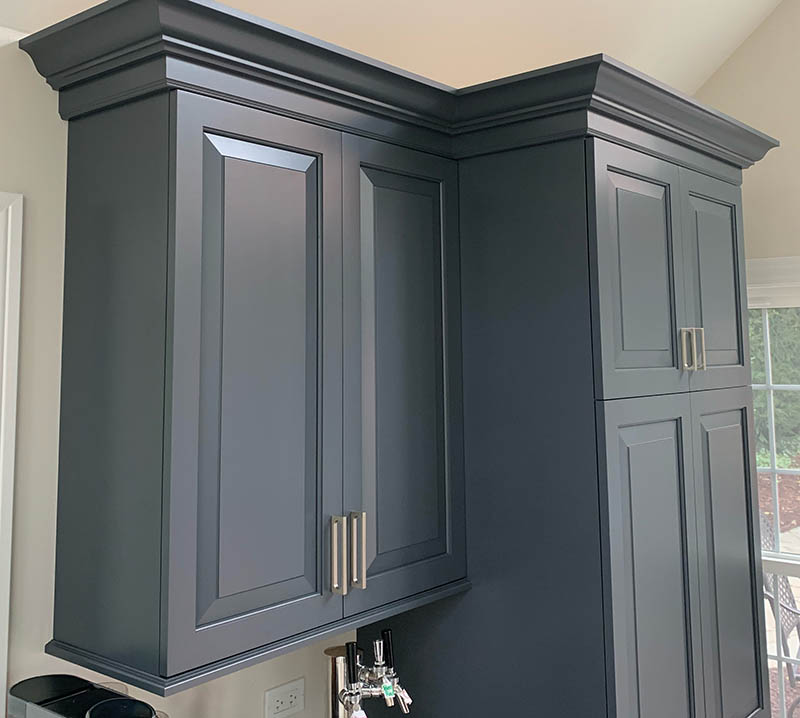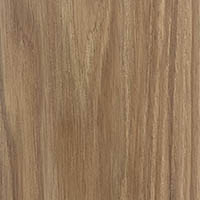Quality and care go into every cabinet we make. Our cabinets are expertly crafted and made to order, built for you.
Frameless Cabinets Made to Order
What are frameless cabinets?
Frameless cabinets do not have a frame attached to the front of the cabinet. Hinges attach to the inside of the sides of the cabinet box. The outside edges of the doors and drawer fronts closely align with the sides of the cabinet.
What are the pros of frameless cabinets?
- Frameless cabinetry provides “full access” to the interiors of each cabinet. There’s no frame to impede the cabinet storage space.
- Drawer boxes are wider, taking full advantage of the cabinet width.
- The hinges are hidden and attached to the inside of the cabinet wall.
- When wall and base cabinets are installed next to each other, there are very slim margins between the doors and drawer fronts.
- Frameless cabinets offer a very clean look and feel
- They provide a more modern, European style.
- Clean, contemporary style
- Faster installation
- May be made of thicker materials
- More accessible and easier to use


1. Sides are constructed of 3/4″ Hardrock Melamine or Plywood screwed to both top and bottom edge-banded to match cabinet color.
2. Recessed toe-kick is 4.5″ high with front blocking for stability and ease of trim installation. Flush toe-kick option available.
3. Bottom uses 3/4″ wood grain Hardrock Melamine edge-banded to match cabinet color.
4. Shelves are constructed using matching 3/4″ wood grain Hardrock Melamine.
5. Top & Drawer stretches are matching woodgrain Hardrock Melamine edge-banded to match cabinet color.
6. Drawer Boxes are 5/8″ maple dovetailed with 1/4″ fully captured bottom. Glides are full extension, soft close, adjustable, under-mount, with 100 dynamic load rating.
7. Back is constructed using 3/4″ wood grain Hardrock Melamine, screwed to sides, and bottom.
8. Drawer Fronts are 3/4″ materials and are offered in matching 5 piece or slab construction. All painted cabinetry receives a 1/4″ MDF center panel.
9. Doors are 5 piece 3/4″ material. All painted cabinetry receives a 1/4″ MDF center panel. Doors over 42″ receive a center stile. Hinges are soft close and adjustable.
Wood Species
Wood is a living material that insists on originality. Naturally each piece has specific characteristics that will slightly differ from one piece to the next, but that’s also the charm that makes a cabinet soft, interesting and unique!

Alder
A closed-grain, non-porous hardwood and handles stains quite well – thanks to this versatility, it is no surprise that alder is very popular with homeowners. Rustic alder has beautiful natural knots and mineral streaks, making it the ideal material for a farmhouse style kitchen.

Cherry
Created to stand the test of time because the wood is durable without being overly dense. It has excellent shock absorbency and bending properties, and this flexibility helps improve its long-lasting qualities.

Maple
Renowned for its longevity and strength. Aside from this, it’s also warp-resistant, unsusceptible to moisture damage, and produces the best custom cabinets, making it the highest quality and most durable cabinet material.

Hickory
Stable and is less prone to warping, shrinking, or swelling due to changes in humidity and temperature. Strength and Durability: The known quality of hickory is being durable and strong.

Oak
Oak is one of the least expensive quality wood cabinet types, making it a popular choice for budget-savvy homeowners looking for cabinets that’ll last for years to come. Oak is durable and water-resistant.
White Oak vs. Red Oak
Each has qualities that make them suitable for different types of situations. White oak, for instance, is usually more dense, although it can be harder to find and typically more expensive. Red oak, then, will often be lighter and best suited for interior builds like cabinets, furniture or hardwood flooring. The grain pattern is eye-catching but less prominent than red oak. White oak grain tends to be narrow but detailed. Red oak is slightly lighter than white oak and has more of a pink-reddish hue, as its name hints.
Rift Oak vs. Quarter Sawn Oak
Rift sawn lumber, also known as straight grain, is cut at the sawmill with the grains intersecting the face of the board at an angle between 30 and 60 degrees and quarter sawn lumber is cut with the grains intersecting the face board the board at an angle between 60 and 90 degrees.
